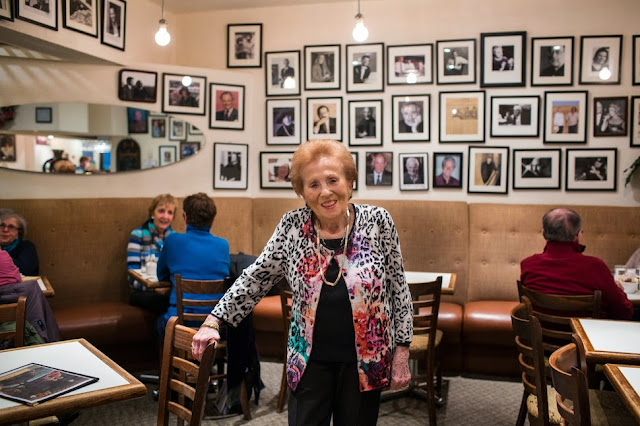The Italian Language of Food and Strozzapreti
"In the heart of Santarcangelo, at the foot of the steps leading to the Clock Tower in the old Palazzo Nadiani, we find the Restaurant-Osteria La Sangiovesa: a true place of Romagna culture and culinary traditions."
The Italian Language of Food and Strozzapreti
The relationship between food and language is interesting. In Italy, where gastronomy developed along provincial lines, this pairing is culturally informative as well as entertaining. Until the unification of Italy in 1861, one could not speak of a national cuisine. The reality of Italian cookery is an amalgamation of distinct regional cuisines more diverse and idiomatically inspired than anywhere else in Europe. The home is still the safeguard of Italian indigenous cooking and culinary traditions, which may account for the colloquial Italian expressions used as the colourful names of various dishes.
The relationship between food and language is interesting. In Italy, where gastronomy developed along provincial lines, this pairing is culturally informative as well as entertaining. Until the unification of Italy in 1861, one could not speak of a national cuisine. The reality of Italian cookery is an amalgamation of distinct regional cuisines more diverse and idiomatically inspired than anywhere else in Europe. The home is still the safeguard of Italian indigenous cooking and culinary traditions, which may account for the colloquial Italian expressions used as the colourful names of various dishes.
The ubiquitous tiramisu, for example, is a Venetian
colloquialism meaning “pick me up.” This dessert, renowned for its power as a
quick fix, is made of Savoiardi (lady fingers) dipped in espresso and layered
with a whipped mixture of mascarpone cheese, sugar and egg yolks, then topped
with cocoa powder. It has attained widespread popularity due to the cachet
associated with anything Italian. Interestingly, professional cooks in Italy
comment, “Tiramisu is arguably so passé one would be embarrassed to serve it.”
The list of Italian colloquial culinary terms is endless.
Some interesting examples are: saltimbocca (a veal dish meaning “leap in the
mouth”), salsicce e facioul d’pane (sausage and beans like bread) and Per’ e
Palummo (a variety of grape meaning “pigeon’s feet”).
At La Sangiovesa Ristorante in Santarcangelo di Romagna,
Italy, I was first introduced to strozzapreti, which literally means “priest
stranglers.” Folklore has it that the travelling clergy would gorge themselves
on it to the point of choking. The name strozzapreti reflects the power of the
church and the fear of the churchgoer. At one time, liturgical power was
manifested in such acts as peasants “buying” blessings from door-to-door
travelling priests willing to pray diligently for absent souls in purgatory.
Wild Boar Ragu with Strozzapreti
I originally made this dish at the first Slow Food Superior dinner in Thunder Bay on April, 2005 by London, Ontario.
6 tablespoons extra virgin olive oil
1/4 pound pancetta, cut into small dice
2 pounds wild boar roast cut into 1/2 inch cubes (or ground)
Flour for dusting Q B
1 cup finely chopped onions
1/2 cup finely chopped celery
1/2 cup finely chopped carrots
1 pound wild mushrooms, chopped
2 tablespoons fresh chopped garlic
1 cup dry red wine
1 (28-ounce/800g) can D.O.P San Marzano tomatoes, diced, and their juices
2 tablespoons concentrated tomato paste
1 cup strong vegetable stock
1 teaspoon sea salt
1/2 teaspoon freshly cracked juniper berries
1 tablespoon chopped fresh sage leaves
1 tablespoon chopped fresh thyme leaves
1/2 cup heavy cream (optional)
1 pound fresh homemade strozzapreti
Freshly grated Parmigiano - Reggiano
In a large heavy pot, heat the oil over medium-high heat. Add the pancetta and sauté, stirring often, until the fat is rendered and the pancetta is crisp.
Add the battuto (onions, celery, carrots,) and mushrooms to the pancetta. Sauté until soft and starting to caramelize. Add the garlic and cook, stirring, for 1 minute.
Season the chopped or ground wild boar with salt and pepper, coat lightly with flour. Add some olive oil to a
separate pan set over a high heat and add the wild boar pieces. Fry until the
meat is golden-brown on all sides - this may have to be done in batches to avoid
crowding the pan.
Deglaze the pan with dry red wine and reduce until not quite evaporated. Add the wild boar and deglazing liquid to the large pot.
Add the diced tomatoes, tomato paste, vegetable stock, juniper berries, fresh sage and thyme and bring slowly to a rolling boil.
Reduce the heat to medium-low, cover, and simmer, stirring intermittently, until the meat is tender and the ragu thickens and is aromatic, approximately 1½ hours. Remove from the heat and stir in the cream (if desired). Adjust the seasoning to taste. Q.B.
Bring a large pot of abundant salted water to a rolling boil. Add the strozzapreti and cook until al dente (when pasta floats to the surface). Drain in a colander and place in a large serving bowl. Ladle the ragu over top of the pasta and mix so the ragu clings to the pasta.
Deglaze the pan with dry red wine and reduce until not quite evaporated. Add the wild boar and deglazing liquid to the large pot.
Add the diced tomatoes, tomato paste, vegetable stock, juniper berries, fresh sage and thyme and bring slowly to a rolling boil.
Reduce the heat to medium-low, cover, and simmer, stirring intermittently, until the meat is tender and the ragu thickens and is aromatic, approximately 1½ hours. Remove from the heat and stir in the cream (if desired). Adjust the seasoning to taste. Q.B.
Bring a large pot of abundant salted water to a rolling boil. Add the strozzapreti and cook until al dente (when pasta floats to the surface). Drain in a colander and place in a large serving bowl. Ladle the ragu over top of the pasta and mix so the ragu clings to the pasta.




Comments
Post a Comment